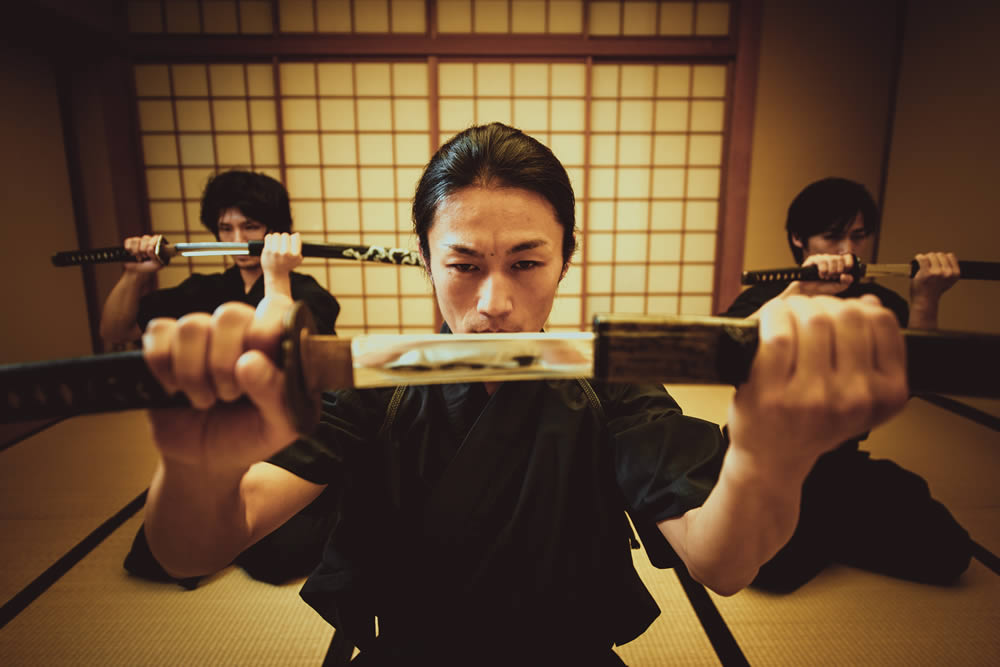In-depth Look into the Japanese Martial Arts
Japan is widely regarded as the birthplace of martial arts, although other countries such as China and Thailand have long practiced their own combat styles. There are many fighting styles for Japanese martial arts, which can confuse those looking to find the right style.
Contents
Over thousands of years, different styles of martial arts have been taught and developed in Japan. The styles have coexisted and influenced each other while maintaining their own distinct personality.
This article will take a look at the two main categories of martial arts in Japan and take a more in-depth look into the following six styles of Japanese modern martial arts called “Gendai budo” (現代武道).
The most important thing to remember about the Japanese martial arts is that multiple styles from different historic times have coexisted and developed, influencing each other but remaining separate.
Japanese Martial Arts Styles: Traditional vs. Modern

In Japan, martial arts are broken into two categories, “Modern martial arts ” and “Old martial arts” (Traditional style).
Modern martial arts
- Kendo
- Karate
- Judo
- Aikido
- Iaido
- Kyudo
- Sumo
- Naginata
- Jukendo
- Shorinji Kempo
Old martial arts
- Kenjutsu
- Iaijutsu / Battojutsu
- Sojutsu
- Jujutsu
- Bojutsu
- Naginatajutsu
- Taijutsu
- Hojutsu
- Ryukyu Kobujutsu
The Modern Japanese Martial Arts
Japanese modern martial arts or “Gendai budo” (現代武道) literally translates to “modern martial arts” and refers to martial arts developed after the Meiji Restoration Era.
Although all developed after the Meiji Era, some styles, such as Iaido, originate from the more traditional techniques.
Kendo
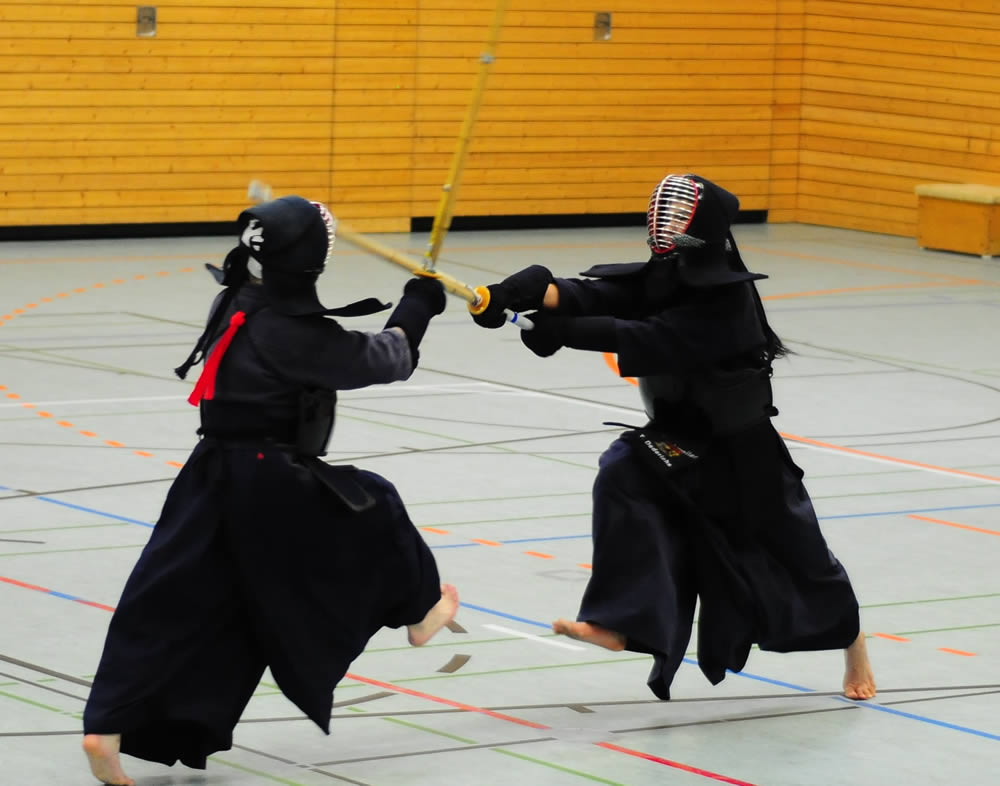
When translated, the word kendo means “way of the sword.” Kendo descends from the traditional art of Kenjutsu but is considered a modern Japanese martial art.
Using bamboo swords (shinai) and protective armor (bogu), Kendo is widely practiced throughout Japan, and most high schools have after school clubs dedicated to Kendo.
Its an extremely dynamic martial art that combines traditional values with modern-day athleticism. Compared with other martial arts styles, practice is loud due to the “Kiai” or shout used to express the fighting spirit.
The techniques involved in Kendo are strikes and thrusts. Strikes can only be made to specific parts of the body, such as wrists, upper body, and head, all of which are protected. Thrusts are designed to attack the throat, but the move is seen as dangerous and only practiced by experienced dan fighters.
Kendo has seen increasing popularity international thanks to concerted efforts by the International Kendo Federation. In 1970 only 17 national federations were affiliated, but in 2015, the number of affiliated nations had increased to 57.
Karate

There are three distinct ways in which Karate can be practice, self-defense, as art, and finally, a combat sport. Karate emphasizes self-development and incorporates moral elements such as leadership, perseverance, virtue, respect, and fearlessness.
When practicing Karate, it’s divided into three categories, “Kihon,” meaning fundamentals, “Kata,” meaning technique, and “Kumite‘ which is sparring.
“Kihon” is generally practiced in small groups with specific drills that have been pre-arranged by the “sensei.” Stances, blocks, kicks, and punches are all types of techniques practiced.
“Kata” is a set of formalized movements designed with offensive and defensive postures in mind. The application of these postures is aimed at combat scenarios, and the player or “karateka” must demonstrate a high level of competency before achieving the next rank.
“Kumite” or sparring literally translates “meeting of hands.” Kumite is practiced in two ways, sport and self-defense. The level of physical contact varies from shadow to full contact, where players wear protective clothing.
Funakoshi, the founder of Shotokan Karate, expressed that “karate was a chance to purge oneself from selfish and evil thoughts.” Funakoshi was a highly regarded student of philosophy and believed “one should be inwardly humble and outwardly gentle.”
Worldwide, Karate is incredibly popular and practiced in almost every country in varying styles and forms. Hollywood, through popular culture and films, helped karate gain in popularity.
Stars like Bruce Lee and Chuck Norris pushed Karate toward a cult-like status. More recently, movies such as The Karate Kid have continued to help Karate maintain its worldwide popularity.
Judo
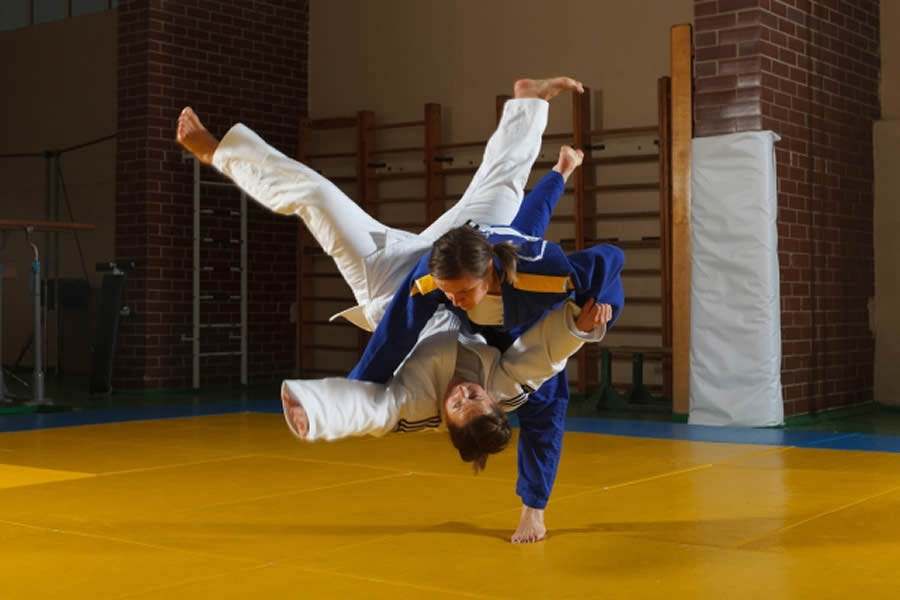
Judo, or “gentle way,” is classified as a modern martial art but has evolved into a combat sport and is represented at the Olympic level. The art itself was developed in 1882 by Jigoro Kano as a form of physical, mental, and moral practice.
Derived from jujutsu, the objective is to take your opponent down by a throw and pin or immobilize them with various types of holds and locks. Striking is a part of judo, but only high level pre-arranged forms.
Practitioners of judo are referred to as “judoka,” and the clothing or uniform is called a “judogi.”
Tournaments or “Shia” are critically important aspects of judo. In 1899 the first official set of rules were drawn up, and the first association was formed called Dai Nippon Butoka Kai.
Scoring is awarded points; for example, a throw that lands the opponent on their back with forceful power receives an “ippon,” while a throw of lesser power scores a “waza-ari.” Two waza-ari equal an ippon. If scores are level after the contest, the “golden score” rule or “sudden death” is implemented.
The International Judo Federation is the governing body for judo and was founded in 1951. The primary role of the Federation is to organize competitions internationally and act as a rules committee.
There are numerous members of the Federation, including the African Judo Union and the Oceania Judo Union.
Aikido

Morihei Ueshiba developed the Japanese martial arts of 4Aikido to link his martial arts study, philosophy, and religious beliefs.
Translated the word aikido means “unifying life energy” or “the way of a harmonious spirit.” The primary goal in the practice of aikido is to “overcome oneself instead of cultivating violence or aggressiveness.”
The fundamental principles of aikido include entering, controlling ones breathing, triangular principles, and turning techniques that redirect the attacker’s strike.
There has been some criticism of aikido, with the most common complaint being its lack of realistic training.
Iaido
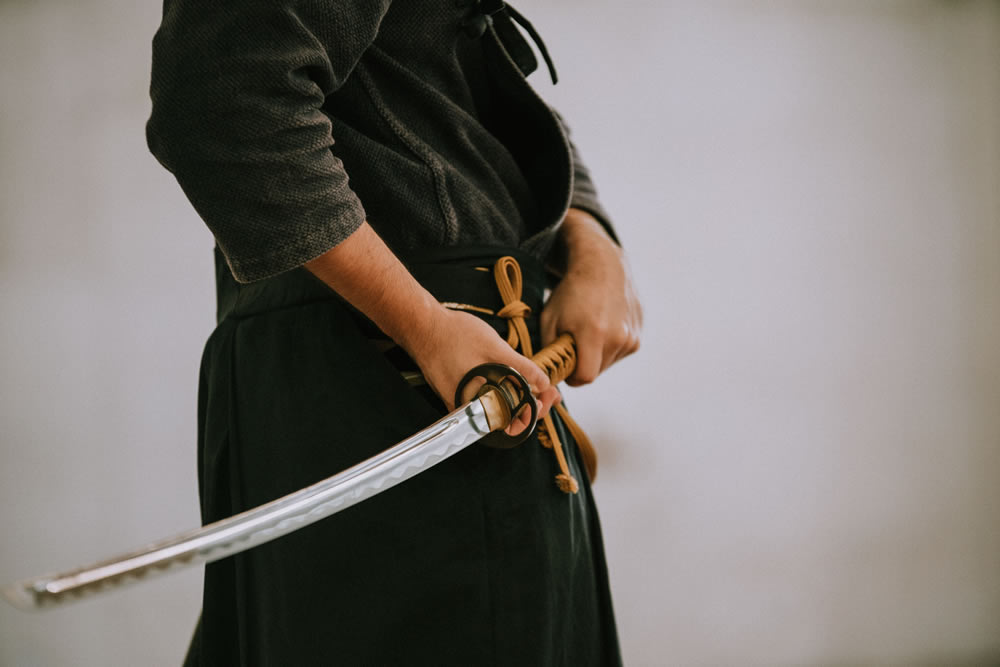
Iaido is a martial art emphasizing quick and efficient drawing of the sword to stop an oncoming attacker.
Controlled and smooth movements, along with removing the sword from its “saya” or “scabbard,” are critical technical movements that must be mastered to achieve a high rank.
Beginners start using wooden swords, but blades with blunted edges may also be used depending on the sensei. These blunted edges are referred to as “iaito.”
Only the very skilled high ranked practitioners use the sharp edge the swords referred to as “iaidoka.”
Kyudo
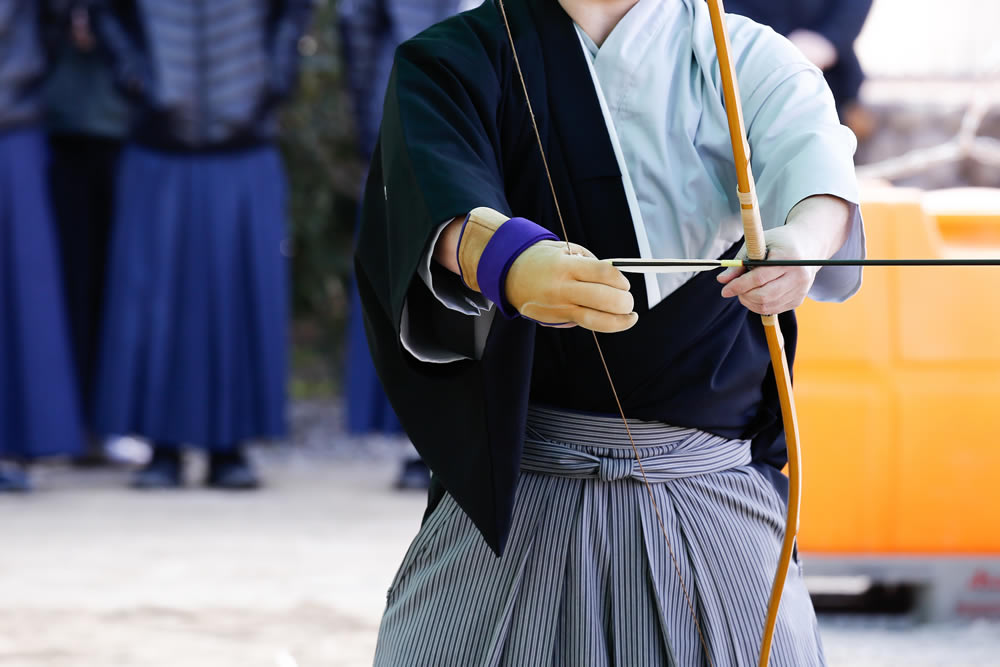
Kyudo’s Japanese martial art is a form of archery, and experts in the discipline are called kyudoka. The art was initially founded by the samurai class but has now grown to an art practiced by thousands worldwide.
The bow or “Yumi” stands over two meters in height, far exceeding the archer’s height. The Yumi is made using traditional techniques and materials such as bamboo, leather, and wood.
In Japan, Kyudo is widely practiced in many forms, including ceremonial, military, and even contemplative. In the contemplative form, the art focuses on meditation, emphasizing the aesthetics of the art while other schools focus on shooting and efficiency.
Kyudo’s primary goal is to find the state of “Shin-Zen-Bi,” which translates as “truth-goodness-beauty.” Shin-Zen-Bi is achieved when the archer hits the target with all their virtues and moral guidance being realized at that very instant.
Sumo
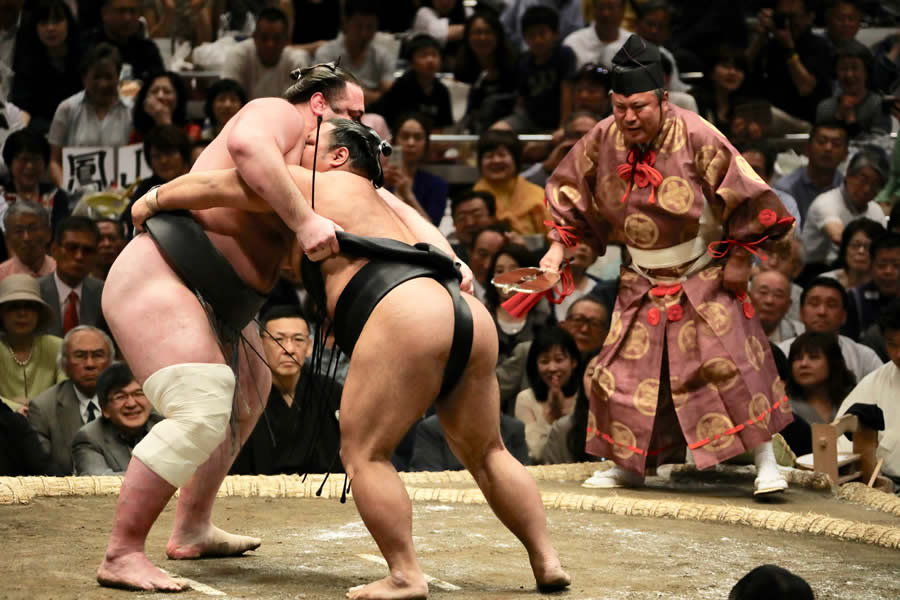
Sumo, or sumo wrestling, is considered a “gendai budo”, or modern Japanese martial art. It is performed by a wrestler, called a “rikishi”, and the aim of the match is to force your opponent out of the ring, or to make them touch the ground with any body part other than their feet.
The ring is usually made of clay and covered with sand, and the rikishi only wear a long belt called a “mawashi” that is tied into knots in the back. The belt must be of a certain thickness and strength, as the wrestlers hold on to it to perform different moves.
There are no weight classes in sumo, meaning weight gain is critical to the sport to avoid being pitted against someone twice your size. Added to which, sumo wrestlers are always male, and women are not even allowed to enter the wrestling ring.
Once you become a rikishi, your life is dedicated to sumo, and you live in a dormitory with other rikishi, eat with everyone, and practice rigorously.
Naginata
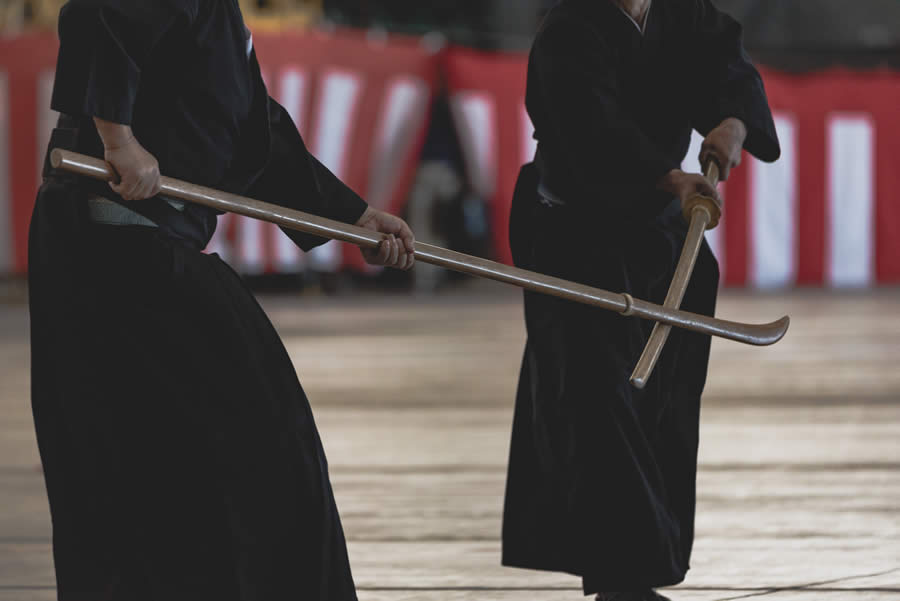
Naginata jutsu is an old Japanese martial art that uses a pole weapon called a Naginata (長刀). The name literally means “long blade”, and has a long curved blade at the end which gave fighters an advantage over a regular sword due to its reach.
The naginata itself was most commonly associated with samurai and warrior monks, and was sometimes called the o-naginata, but there was also a smaller version used by women called the ko-naginata.
Naginata were historically used on the battlefield to clear space with their length, but their weight also gave more power to their strikes and cuts. These days, a wooden naginata with a bamboo blade is used for safety reasons, and there are two different forms of competition: one-on-one and pair fighting.
Jukendo
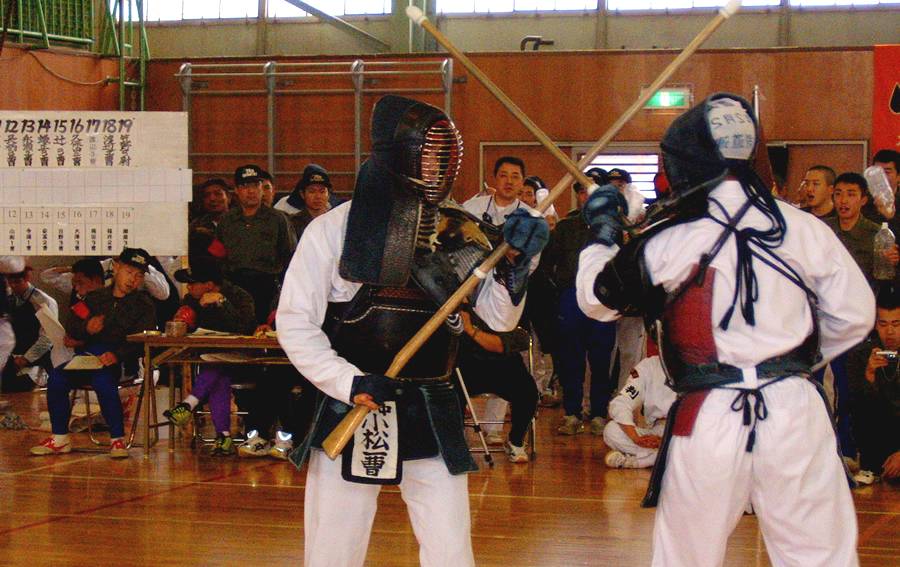
Jukendo is the art of bayonet fighting. It is similar to kendo in its attire, etiquette, and practiced forms (kata).
The art was originally called Jukenjutsu, but was banned in 1945 alongside other Japanese martial arts, but made a comeback in the 1950s as Jukendo.
These days, instead of using a real bayonet, they use a wooden one, called a “mokuju”. It has a blunted bayonet at the end. Those practicing will wear armor and helmets, including hip protectors, gloves, and chest covers.
A bit like in fencing or in Kendo, a “valid point” (ippon) in a match is achieved by thrusting with a powerful leap and a sharp withdrawal. The areas of target are the throat, chest, left shoulder, and left forearm.
Jukendo has not been widely practiced by or promoted to the public until very recently, so the martial art is mostly only practiced by the military as part of their physical education regime.
Shorinji Kempo
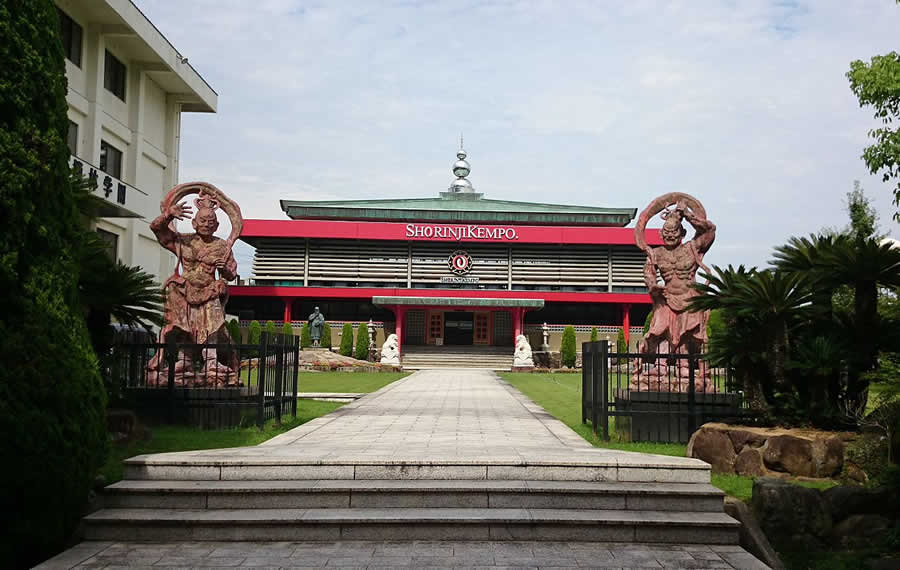
Shorinji Kempo is a weaponless modern martial art that came about in postwar Japan. It is different from Shaolin Kung Fu, but is said to have its roots in Chinese techniques and philosophy.
The martial art was founded by Kaiso Doshin So in 1947, and has three basic goals at its core: self-defense, mental development, and improved health. It is not simply a martial art to raise tough fighters.
Kaiso had noticed three main types of motion in the martial arts he had practiced: circular, straight, and arc. So he used these in Shorinji Kempo and created a martial art that worked with modern conditions.
The rigorous training system has various stages to it, including spiritual, mental, and physical training. Most of the physical training involves a competitor or opponent, but the object is not to defeat them, but to help them improve their technique.
The Old Japanese Martial Arts – Kobudo
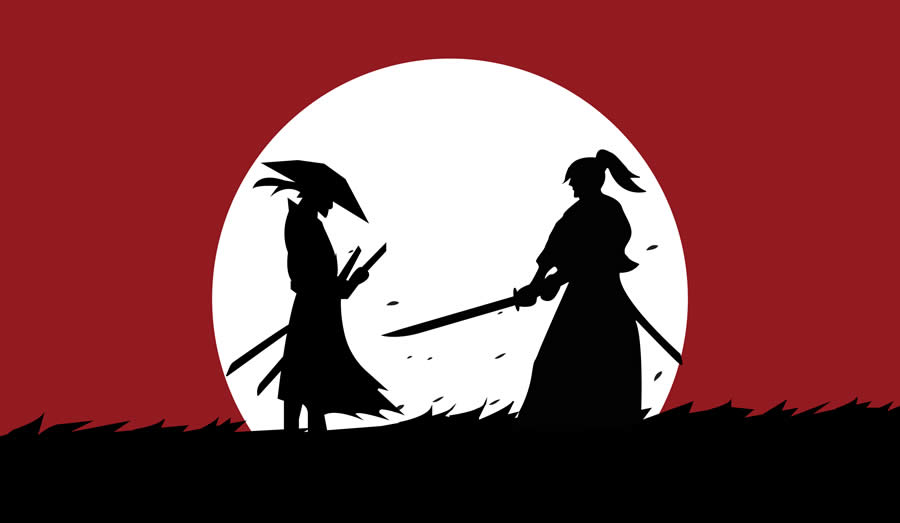
“Old martial arts” is a term used to describe the Japanese martial arts styles, which originated before the Meiji Restoration Era from 1866 to 1869. Commonly referred to as “Koryu” (古流), which translates to “old style” or “Kobudo” (古武道), which translates to “old martial arts,” these martial arts are still practiced in Japan today.
Kenjutsu
Kenjutsu literally means the “technique of the sword” (剣術), and is mainly about learning the skills and techniques needed for battle.
Iaijutsu / Battojutsu
Iaijutsu is the technique of drawing one’s sword for combat. Battojutsu is the old term, but still sometimes used.
Sojutsu
Sojutsu is the Japanese martial art of spear fighting. The spear is called a “yari” (槍), and is thrown from horseback or on foot.
Jujutsu
Jujutsu is an unarmed martial art performed in close combat that can be used in an offensive or defensive way to kill or subdue an opponent.
Bojutsu
Bojutsu literally means “the technique of the stick/staff” (棒術). A polished staff of about 180cm in length is used to fight, and was considered effective against a sword.
Naginatajutsu
Naginatajutsu is the Japanese martial art that uses a pole weapon with a long curved blade called a naginata (長刀).
Taijutsu
Taijutsu is an umbrella term for combat martial arts that use the body, and no weapon. It can be used interchangeably with Jujutsu.
Hojutsu
Hojutsu is the Japanese martial art of using firearms, but it is combined with ground fighting for effective combat training.
Ryukyu Kobujutsu
Ryuyku Kobujutsu are the old martial arts of Japan’s southern region of Okinawa, formerly known as the Ryukyu Kingdom.
All of the above can be described as “Kobudo”, or old martial arts, as the term refers to techniques using armor and weapons, combat, or horse riding. These styles came about before the Meiji Restoration in the 1860s. They are the old martial arts of Japan that focused on training to demonstrate power in actual combat, as opposed to winning or losing in a match. So, there were no particular rules such as prohibited striking techniques, and some say it is closer to modern-day “mixed martial arts”.
During the warring states period from 1467-1615, there was a need for different, practical techniques, which is when the sub-divisions came about. Strength in combat was essential, so everything from swordsmanship to hands-on combat was practiced, and each type was called –jutsu, because jutsu (術) means skill or technique, as opposed to –do(道) of modern martial arts, which means “the way of”.
Trying out Japanese Martial Arts as a tourist
Japan is a country full of incredible traditions, including this variety of martial arts, so a trip to Japan simply wouldn’t be complete without experiencing them for yourself!
The great thing about these sports is that you don’t need to have prior experience or be super athletic to give them a go. Everyone starts somewhere. Many of these martial arts are more about discipline and focusing your mind, like Aikido and Kendo, so you can try them out while you’re in Japan, and if you taking a liking to them, continue them back home to become a martial arts master.
One of the most popular martial arts abroad is karate, so there are plenty of experiences around Japan that welcome overseas visitors, but for something a bit different you can even try samurai or ninja experiences, too. Recently, Kyudo is also becoming popular, as it is a Japanese form of archery, so it has a lower barrier to entry as it’s not a hands-on defense or combat sport.
There are so many interesting martial art styles to try out in Japan, and although you can go to watch some of them, experiencing them first hand is by far the most exciting way to experience Japanese culture.
